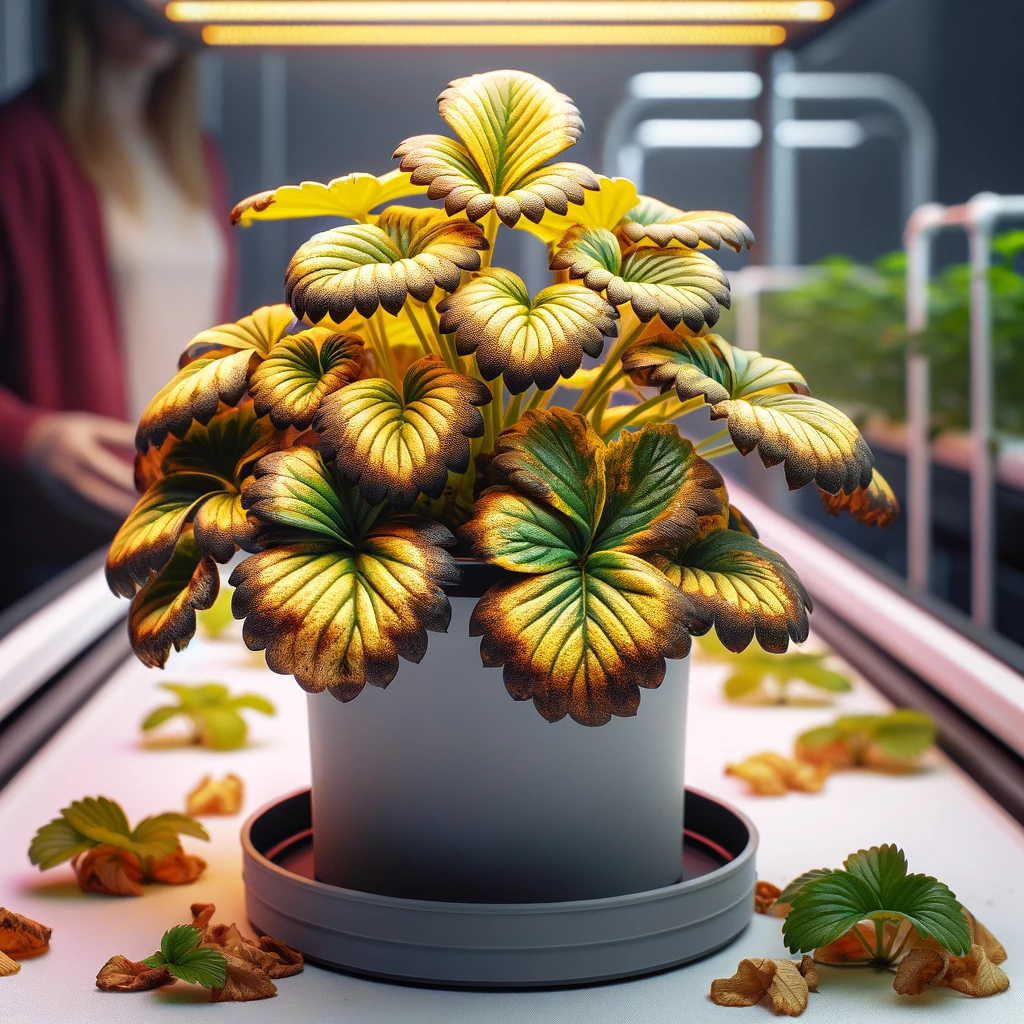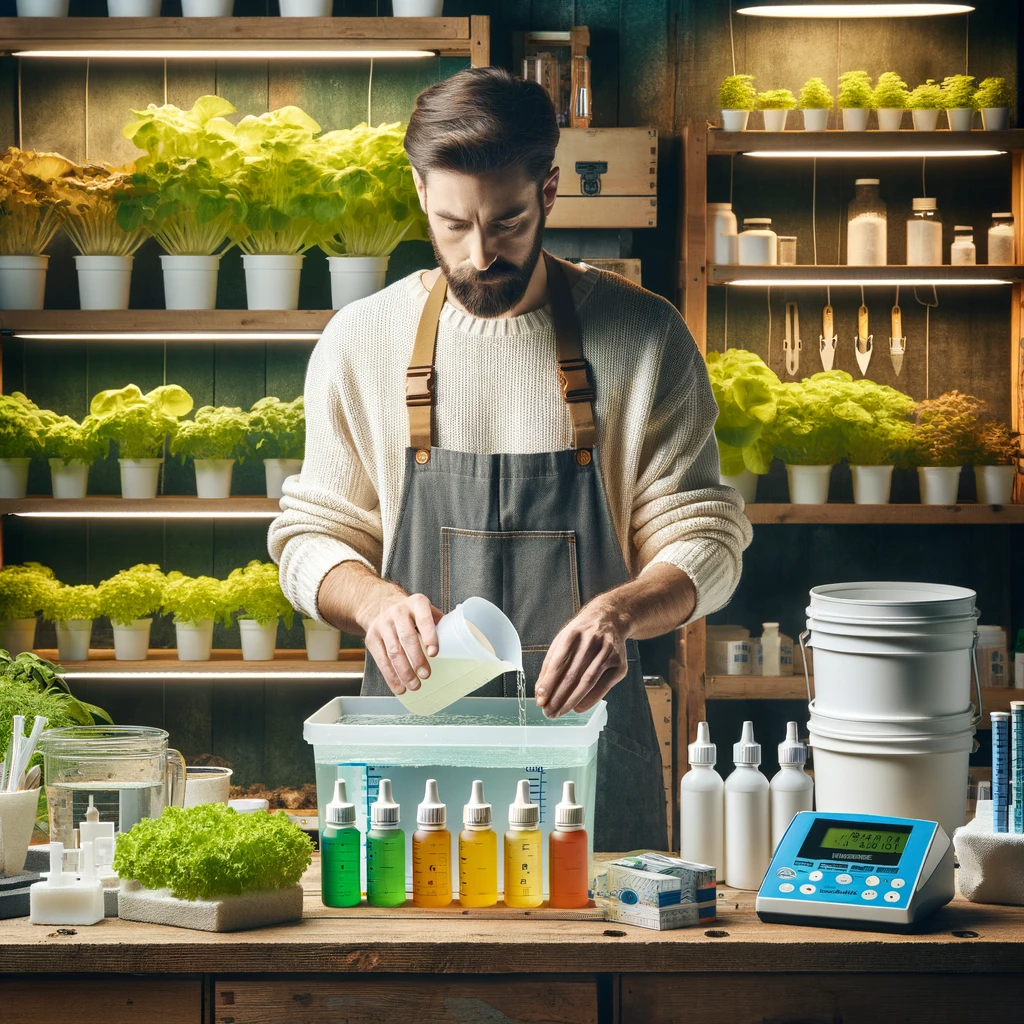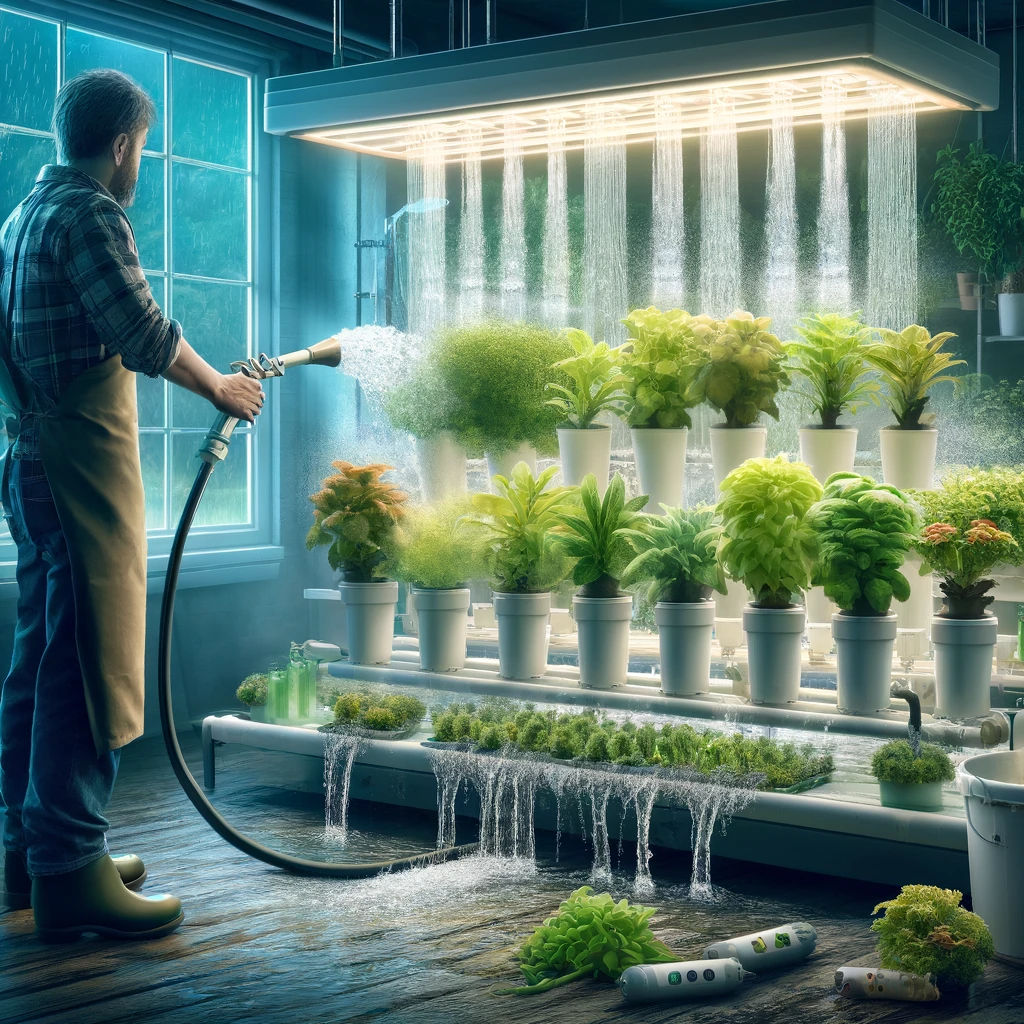Hey there! Ever had that moment where you’re super excited about your hydroponic garden, only to find your plants looking a bit… crispy? Yup, you might be dealing with nutrient burn. Let’s dive into what this is, why it happens, and how to spot it, so you can keep your garden thriving.
What is Nutrient Burn in Hydroponics?
So, what exactly is nutrient burn? Think of it like this: your plants have been overfed, kind of like you at an all-you-can-eat buffet. When they get too many nutrients, they can’t handle it all and start to show signs of stress. It’s a common issue in hydroponics because you’re in control of every drop of nutrient solution your plants get. Sounds like a superpower, right? But with great power comes great responsibility!
The Science Behind Nutrient Burn
Nutrient burn occurs when plants receive an excess of nutrients, particularly those with high concentrations of salts. These salts can accumulate in the root zone, leading to osmotic stress. Essentially, the roots struggle to absorb water, causing dehydration and the characteristic burn symptoms. Understanding this process helps you appreciate why careful nutrient management is crucial in hydroponics.
Causes of Nutrient Burn in Hydroponics
Nutrient burn in hydroponics can stem from several issues. Here’s a handy list of the most common causes:
1. Over-fertilization
Ever heard the saying, “too much of a good thing?” That’s exactly what happens with over-fertilization. You’re eager to give your plants everything they need, but sometimes, a little too much love (or nutrients) can backfire. Too many nutrients can overwhelm your plants, leading to those dreaded burnt tips.
How to Avoid Over-fertilization
- Follow Manufacturer’s Guidelines: Always stick to the recommended dosages.
- Regular Monitoring: Use EC meters to track nutrient levels.
- Gradual Increases: Increase nutrient concentrations slowly and watch for plant responses.
2. Imbalanced Nutrient Solutions
Getting the balance right is like making a perfect cup of coffee – too much of one thing can throw everything off. If your nutrient solution is off-balance, your plants might not absorb nutrients properly, leading to nutrient burn. Imagine trying to eat a pizza with way too much cheese and no crust – it’s just not right!
Balancing Nutrient Solutions
- Nutrient Ratios: Ensure your nutrient mix has the right balance of macro and micronutrients.
- Regular Adjustments: Adjust the solution based on plant growth stages.
- Consultation: Refer to hydroponic experts or guides for specific crop needs.
3. Improper pH Levels
pH levels are the unsung heroes of your hydroponic setup. If the pH is too high or too low, your plants can’t absorb nutrients effectively, even if you’ve got the right mix. It’s like trying to drink a smoothie through a clogged straw – frustrating and ineffective.
Managing pH Levels
- Regular Testing: Use pH testing kits to monitor levels.
- Ideal pH Range: Maintain pH between 5.5 and 6.5.
- Adjusting pH: Use pH up and down solutions to maintain the correct range.
4. Water Quality I ssues
Believe it or not, the quality of your water can make or break your garden. Poor water quality can lead to nutrient imbalances, making it harder for your plants to get what they need. Think of it as trying to stay hydrated with soda instead of water – it just doesn’t work.
Ensuring Water Quality
- Use Filtered Water: Remove impurities that can affect nutrient uptake.
- Check for Contaminants: Regularly test water for harmful substances.
- Consistent Water Source: Use a reliable and clean water source for your system.

Symptoms of Nutrient Burn in Hydroponics
Recognizing nutrient burn early can save your plants from further damage. Here are some symptoms to watch out for:
Visual Indicators
- Leaf Discoloration: Yellowing, browning, or scorched leaf tips.
- Wilting: Droopy leaves and stems.
- Stunted Growth: Plants not growing as expected.
Physical Symptoms
- Brittle or Dry Leaves: Leaves feel crispy to the touch.
- Curling or Distortion: Leaves curling or warping.
Other Signs
- Root Discoloration or Damage: Roots turning brown or black.
- Poor Overall Health: Plants looking unhealthy and not thriving.
Comparison Table: Nutrient Burn vs Other Issues
| Symptom | Nutrient Burn | Pest Infestation | Disease |
|---|---|---|---|
| Leaf Discoloration | Yellowing, browning, burnt tips | Speckled or spotted leaves | Yellowing with mold/fungi |
| Leaf Texture | Brittle, dry | Holes or eaten parts | Soft, mushy |
| Growth Pattern | Stunted growth | Uneven or deformed growth | Wilting, decaying |
| Root Condition | Brown or black, damaged | N/A | Rotted, foul-smelling |
| Recovery | Adjust nutrients and pH | Pesticides, manual removal | Fungicides, better ventilation |
Diagnosing Nutrient Burn in Hydroponics
Step-by-Step Diagnosis Process
Diagnosing nutrient burn is a bit like being a plant detective. Here’s how to do it:
- Inspect Your Plants: Look for visual and physical symptoms.
- Check Nutrient Levels: Review how much nutrient solution you’re using.
- Compare with Other Issues: Differentiate nutrient burn from pests or diseases.
- Test with Kits: Use pH and EC meters to test your nutrient solution.
Using Testing Kits
Regular testing with pH and EC meters can help you catch imbalances early. Here’s what to do:
- pH Testing: Ensure your solution is within the ideal range (5.5 – 6.5).
- EC Testing: Monitor the electrical conductivity to gauge nutrient concentration.
Preventing Nutrient Burn in Hydroponics
Prevention is better than cure! Here are some tips to prevent nutrient burn:

Balanced Nutrient Solutions
- Follow Recommendations: Use the recommended nutrient ratios.
- Resist Overfeeding: Don’t add extra nutrients “just in case.”
Maintaining Proper pH Levels
- Use pH Testing Kits: Regularly test and adjust your solution’s pH.
- Maintain Ideal Range: Keep pH between 5.5 and 6.5.
Water Quality Management
- Use Clean, Filtered Water: Ensure water is free from impurities.
- Regular Water Checks: Monitor water quality regularly.
Regular Monitoring and Maintenance
- Set a Routine: Check your system daily.
- Consistent Monitoring: Regularly test and adjust as needed.
Treating Nutrient Burn in Hydroponics
Immediate Steps
If you spot nutrient burn, don’t panic! Here’s what to do:
- Flush the System: Use clean, pH-balanced water to remove excess nutrients.
- Adjust Nutrient Levels: After flushing, reset your nutrient levels.
Long-Term Solutions
- Implement Preventative Measures: Follow the tips to prevent future issues.
- Ongoing Maintenance: Regular checks to keep your system healthy.

Flushing Guide
| Step | Description |
|---|---|
| 1. Prepare Water | Use clean, pH-balanced water. |
| 2. Flush System | Run the water through your system to clear out excess nutrients. |
| 3. Monitor pH/EC | Check pH and EC levels to ensure they are back within the ideal range. |
| 4. Reintroduce Nutrients | Gradually add nutrients back, starting with lower concentrations and increasing as needed. |
Conclusion
Nutrient burn can be a bummer, but with a little know-how, you can keep your hydroponic garden thriving. Remember, it’s all about balance and paying attention to what your plants are telling you. Happy gardening!
Call to Action
Got a nutrient burn story or tip? Share it with us! Join our community of hydroponic enthusiasts and let’s learn together. Visit our website for more tips and resources. Happy growing!
[mailerlite_form form_id=2]
Related Products…
-
 1 Pint of Fox Farm Grow Big Hydro Liquid Concentrate Fertilizer$18.99
1 Pint of Fox Farm Grow Big Hydro Liquid Concentrate Fertilizer$18.99 -
%27%20fill-opacity%3D%27.5%27%3E%3Cpath%20fill%3D%22%23f8f5ff%22%20fill-opacity%3D%22.5%22%20d%3D%22M343.4%20113v187.6h-88V113z%22%2F%3E%3Cellipse%20fill%3D%22%23000005%22%20fill-opacity%3D%22.5%22%20rx%3D%221%22%20ry%3D%221%22%20transform%3D%22matrix(4.87453%20-59.9926%20284.9041%2023.14908%2082%208.5)%22%2F%3E%3Cellipse%20fill%3D%22%23f1f3e0%22%20fill-opacity%3D%22.5%22%20rx%3D%221%22%20ry%3D%221%22%20transform%3D%22matrix(-23.73813%20113.62803%20-50.24658%20-10.49706%201%20239.2)%22%2F%3E%3Cellipse%20fill%3D%22%23889a27%22%20fill-opacity%3D%22.5%22%20rx%3D%221%22%20ry%3D%221%22%20transform%3D%22matrix(-64.78446%20-53.49559%2030.51057%20-36.94904%2094.2%20194.5)%22%2F%3E%3C%2Fg%3E%3C%2Fsvg%3E) 2.2 lb General Hydroponics MaxiGro Plant Food Promotes Vigorous Growth$15.99
2.2 lb General Hydroponics MaxiGro Plant Food Promotes Vigorous Growth$15.99 -
Product on sale
 Hydroponic Nutrients Set (800ml Total), Hydroponic Plant Food A & B, Indoor Plant Fertilizer for Hydroponic Growing Systems, Growing System Accessories for VegetablesOriginal price was: $14.99.$9.74Current price is: $9.74.
Hydroponic Nutrients Set (800ml Total), Hydroponic Plant Food A & B, Indoor Plant Fertilizer for Hydroponic Growing Systems, Growing System Accessories for VegetablesOriginal price was: $14.99.$9.74Current price is: $9.74.
Forum
Got something to share or a question to ask? Jump in and start a conversation! Whether it’s tips, advice, or just sharing your experiences, we’d love to hear from you. Don’t be shy—your input could inspire or help someone else!- This forum has 1 topic, and was last updated 10 months, 2 weeks ago by .
- Topic
- Voices
- Last Post
- You must be logged in to create new topics.






